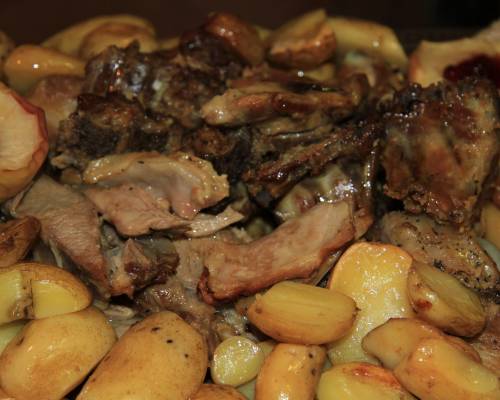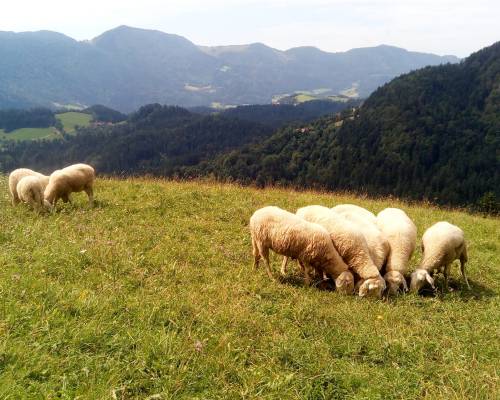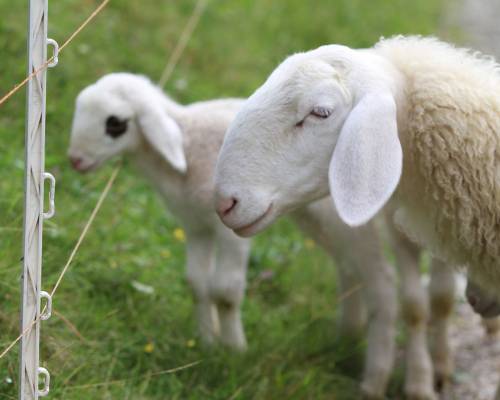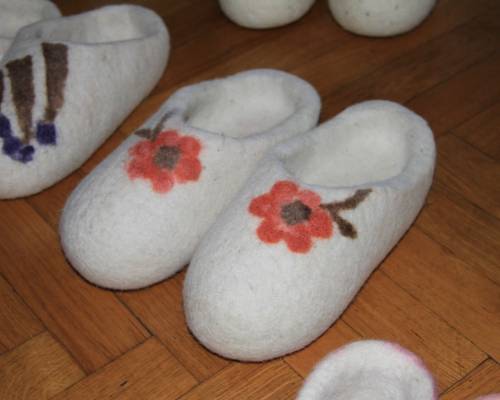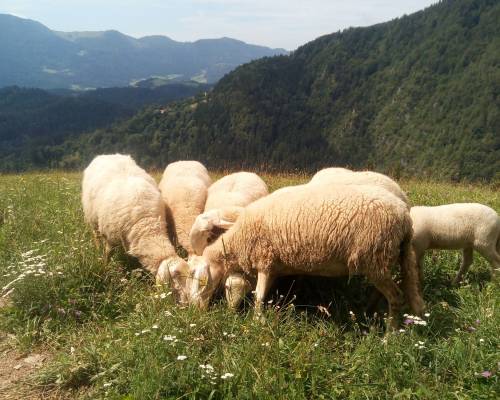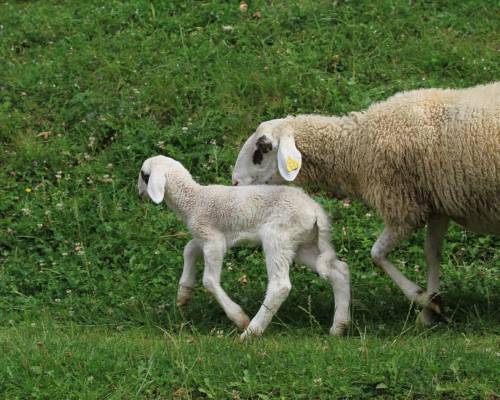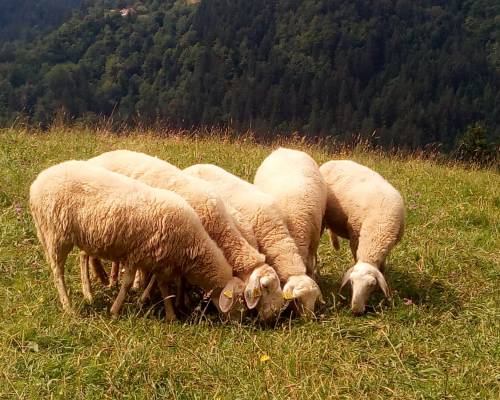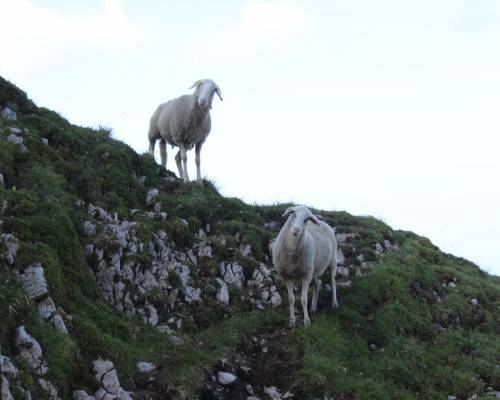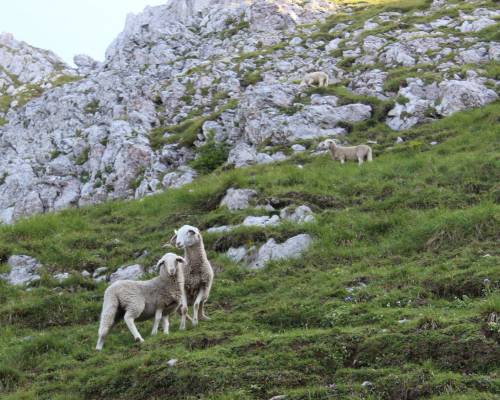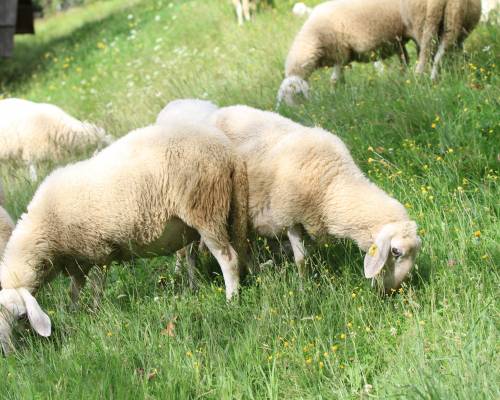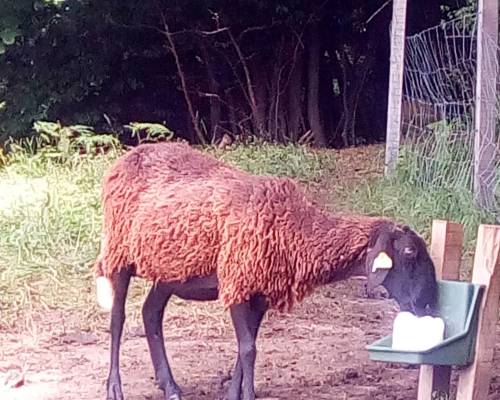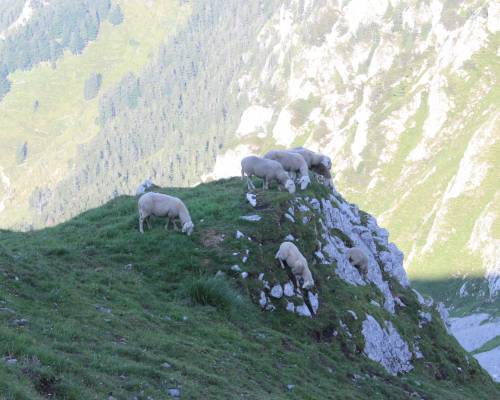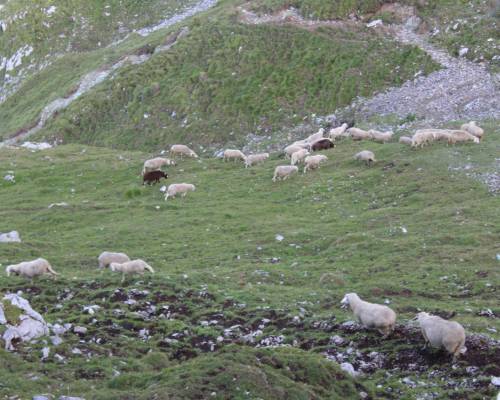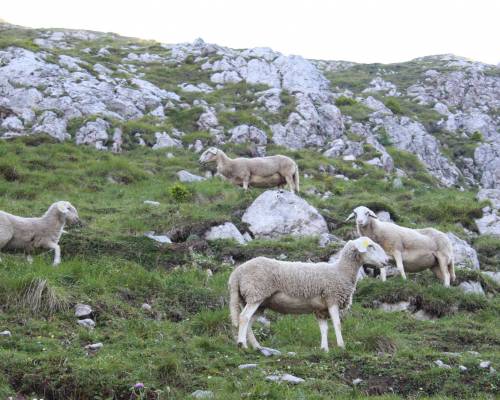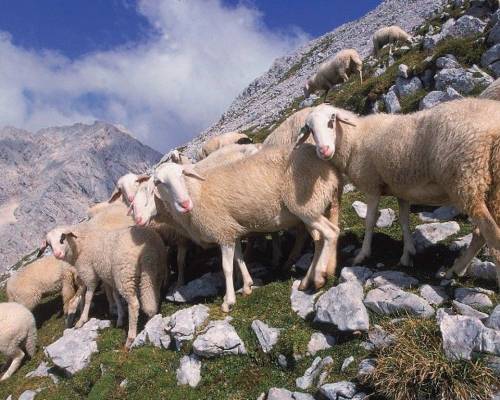Jezersko-Solčava sheep
Origin and Development of the Breed
The Jezersko–Solčava sheep is an indigenous Slovenian breed that originated from crossbreeding the native long-tailed sheep with Bergamasca and Padovana breeds. Depending on the region, it was referred to as “jezerska" in Carinthia and “solčavska" in Solčava. Historical records from 1842 to 1844 indicate that sheep farming was highly developed in Solčava, with these sheep being larger than those in other Slovenian regions and prized for their high-quality wool. In 1922, the breed was proposed for improving Slovenian sheep breeds and was likely first named “jezersko-solčavska ovca" at that time.
Breed characteristics
hese sheep are predominantly white, though dark brown individuals can also be found. Ewes have a withers height of 65-67 cm, while rams exceed 70 cm. Ewes weigh between 65 and 75 kg, and rams range from 90 to 110 kg. Distinctive features include a convex nasal profile, large drooping ears, and a long, wool-covered tail extending beyond the hock joint. Notably, Jezersko–Solčava sheep are non-seasonal breeders, capable of reproducing throughout the year—a rare trait among sheep breeds. The average litter size is 1.2 lambs.
Breed distribution and endangerment
Among Slovenian indigenous sheep breeds, the Jezersko–Solčava is the most numerous, distributed across the entire country. Approximately 7,200 animals are registered in the herdbook, classifying the breed as endangered due to high inbreeding rate.
Did you know ...
... that in 1856, Jezersko sheep were awarded at the agricultural exhibition in Paris for their originality?
… that at the beginning of the last century, the breed was described as the foremost in Slovenia regarding the quality of its wool?
Number of animals
Farm locations
Breeding purpose and Products
The Jezersko–Solčava sheep is primarily raised for meat production, specifically for lamb intended for slaughter. Additionally, its wool is utilized for various purposes, including the creation of woolen and felted products, insulation materials, and as a growth medium. This breed is well-adapted to grazing on steep mountainous pastures rich in diverse grass species, which contributes to the high quality of its meat. Grazing these sheep serves as an effective method for maintaining and preserving these alpine pastures, preventing overgrowth and promoting biodiversity.


